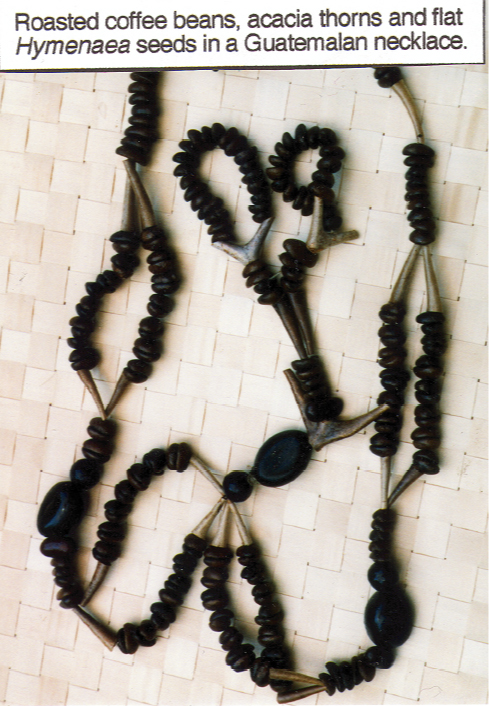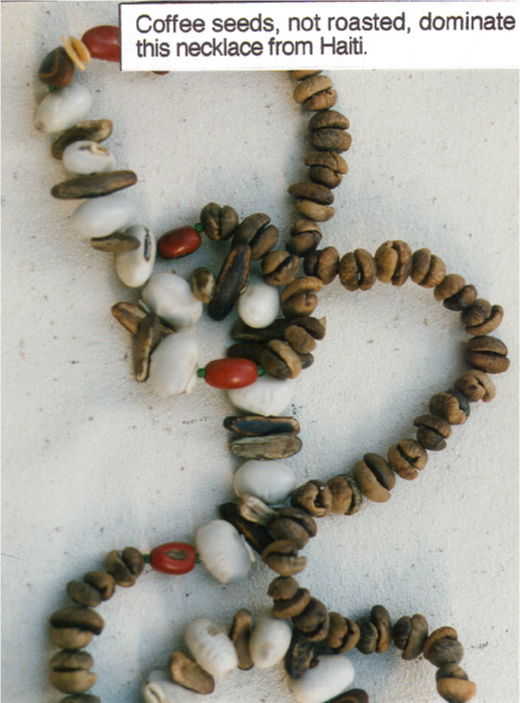

The common name of a small tree or shrub growing wild in the tropical rain forest of Ethiopia, Mozambique and Angola is derived from the Arabic word for the drink, coffee.
According to a legend about the discovery of coffee as a stimulant, monks tending goats near the Red Sea noticed that the animals were active and sleepless. A shepherd traced their footsteps to a remote watering hole where they had chewed the leaves on a shrub with little dark berries. Berries brought to the monastery were pulverized by the priest and dropped in boiling water. When he drank this decoction he felt a comfortable glow and alertness. Upon offering it to the brothers of his monastery, each leaped to his feet to praise Allah. They called the drink "kahveh," a word meaning "stimulating" in the language of the times.12
The fruit of Coffea arabica is a cherry-size two-seeded drupe referred to as a coffee "berry." The coffee berry takes nine months to mature, changing from a dull green color to yellow to bright red. A thin red skin covers yellow pulp which contains two gray-green coffee beans. Each seed has a glistening membranous seed coat which is removed by polishing before roasting. In some places the flesh of the fruit rather than the seed is consumed.
At the end of the fifteenth century when coffee came to Europe it soon acquired the reputation as an aphrodisiac and cure-all. Magical properties were attributed to the beans, a belief that echoes today in the act of reading coffee grounds.13 It was brought to the New World in 1720.
The people in several Central American countries string coffee seeds into necklaces.
 |
 |
BACK |
TOP |
FWD |